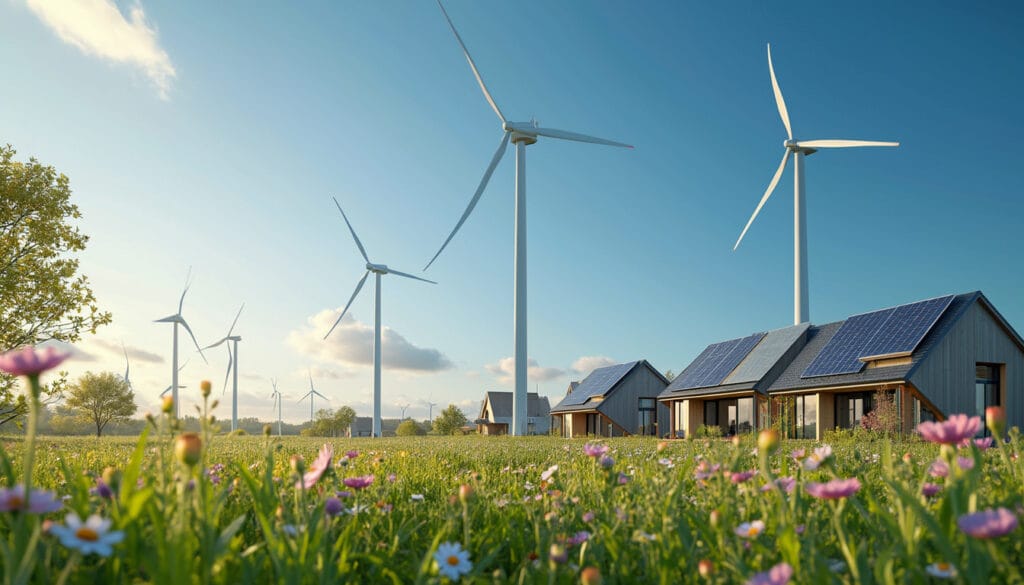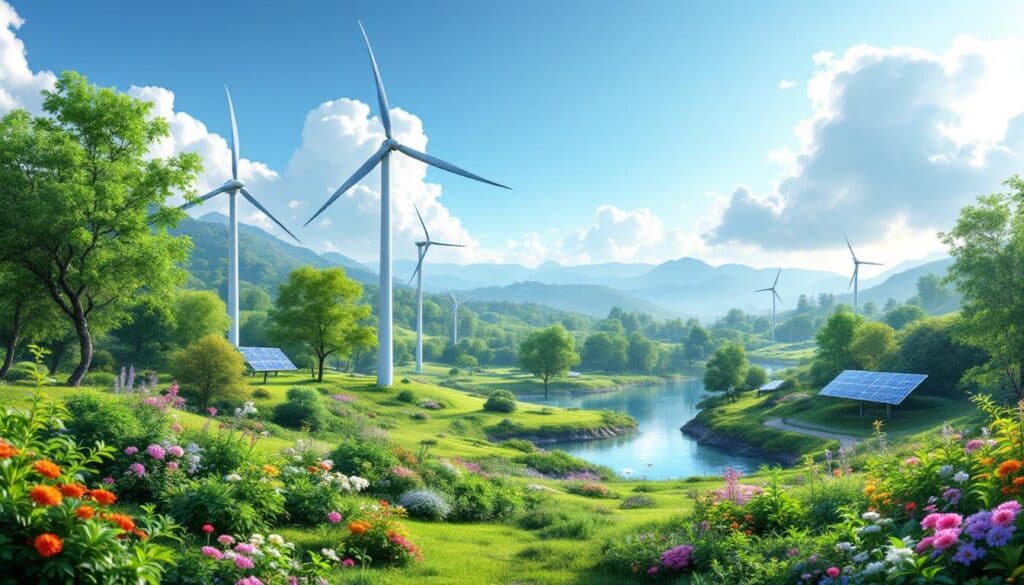In 2024, renewable energy production reached a record level of 144.7 TWh, marking a 6.5% increase compared to the previous year.
This surge highlights the growing importance of bioenergy, wind, and photovoltaics in our energy mix.
The increase in installed capacity helped to compensate for less favorable weather conditions.
The share of renewable energy in electricity production surpassed 50.8% in 2024, a historic first. This advancement is the result not only of the growth of renewable generation but also of the decline in non-renewable energy production. A total addition of 4.2 GW of capacity, mainly from wind and solar, was decisive. Furthermore, a significant increase in bioenergy contributed to setting new records this year.
What factors enabled renewable energies to exceed 50% of electricity production in the UK in 2024
In 2024, the United Kingdom reached a significant milestone by achieving a historic threshold where renewable energies supplied more than 50% of the national electricity. This remarkable progress is the result of several key factors. Firstly, the increase in installed capacity, which reached a total of 60.7 GW, allowed for increased energy production. Among these additions, offshore wind and photovoltaic solar (PV) played prominent roles.
Moreover, despite less favorable weather conditions at certain times of the year, the increase in generation from bioenergy, combined with technological improvements, offset these challenges. New projects, such as Envision Energy in Kazakhstan, have also inspired similar initiatives in the UK, promoting a faster adoption of renewable technologies.
Political commitment and economic incentives have also been crucial. Policies favoring investments in green infrastructure and the economic benefits of renewable energy projects, as observed in New York, have encouraged local businesses to engage more actively in this sector.
What renewable energy sources contributed the most to this growth
The growth of renewable energies in the UK in 2024 was primarily driven by three sources: bioenergy, wind energy, and photovoltaic solar. Bioenergy recorded a record increase of 18%, supported by the recovery of production in large plants after a period of reduction due to technical constraints in 2022 and 2023. This resilience helped maintain a significant share in the energy mix.
The wind energy sector, both offshore and onshore, has also been a key driver. In particular, offshore installations played a key role, representing nearly two-thirds of the new capacity added. Iconic projects like Neart na Gaoithe and Moray West in Scotland not only increased the installed capacity but also improved efficiency through larger and more efficient turbines.
Photovoltaic solar contributed with a 9.9% increase in installed capacity in 2024, the largest addition since 2016. This expansion was largely supported by many small domestic installations, totaling approximately 147,000 new installations. The rise of domestic solar panels has not only diversified production but also enhanced the energy autonomy of British households.
How capacity management influenced renewable energy production
The effective management of installed capacities has been crucial to reach the threshold of 50% renewable production in the UK. In 2024, a total addition of 4.2 GW of new capacities was observed, the highest since 2017. This additional capacity was largely allocated to offshore wind and PV solar projects, allowing it to meet the growing demand for renewable energy.
The integration of these new capacities was facilitated by strategic investments and public-private partnerships. For example, a new renewable energy project in Tulare County not only increased local capacity but also served as a model for other similar projects in the UK.
Furthermore, improvements in energy storage and distribution technologies have maximized the use of installed capacities, thus reducing losses and optimizing the availability of renewable resources. This effective management has been essential for maintaining resilient production in the face of weather fluctuations and technical challenges.
What impact have weather conditions had on renewable generation
Weather conditions have always had a significant impact on the production of renewable energies, and 2024 was no exception. The fourth quarter of the year saw a 6.4% decrease in overall production compared to the fourth quarter of 2023, mainly due to weaker winds in the South East and technical disruptions on subsea export cables.
Despite these challenges, the resilience of the system was strengthened by an increase in generation from bioenergy, which partially offset the decline in offshore wind production. This flexibility is essential for maintaining a high share of renewable energy even during unfavorable weather conditions.
Technological advances, such as the installation of more robust turbines and improvements in weather forecasting systems, have also helped mitigate the impact of climatic variations. Moreover, the diversification of renewable sources, including solar energy and hydropower, has stabilized overall production despite regular fluctuations.
What are the flagship projects and innovations in the renewable energy sector in the UK
The year 2024 was marked by several innovative flagship projects in the field of renewable energies in the UK. Among them, projects focusing on anaerobic digestion and converting organic waste into energy have particularly captured attention. These initiatives not only increase the production of renewable energy but also contribute to the sustainable management of waste.
A notable example is the renewable energy installation launched by Envision Energy in Kazakhstan, inspiring similar projects in the UK. These projects incorporate advanced storage and conversion technologies, thus optimizing energy efficiency and reducing losses.
Furthermore, the rise of larger and more efficient offshore wind turbines has allowed for increased production with less maintenance. Innovations in turbine materials and designs have also extended their lifespan and improved their energy yield. These technological advancements are essential for maintaining the competitiveness of renewable energies against traditional energy sources.
What are the challenges and perspectives for the future of renewable energies in the UK
Although renewable energies reached an impressive milestone in 2024, several challenges remain to maintain this upward trajectory. One of the main obstacles is the management of the intermittency of renewable sources, such as wind and solar, which heavily depend on weather conditions. To address this, continuous investments in storage technologies and smart grids are essential.
Moreover, the transition to a fully renewable energy infrastructure requires significant investment and effective coordination among various sector stakeholders. Initiatives like the economic benefits of renewable energy projects in New York highlight the importance of fostering a favorable environment for green investments, which could serve as a model for the UK.
In the future, the UK aims to further increase its renewable capacity, with projects planned for 2025 and beyond, including innovations in hydropower and geothermal energy. International collaboration and the sharing of best practices will also be crucial to overcoming challenges and ensuring a successful and sustainable energy transition.
Articles similaires
Thank you!
We will contact you soon.














